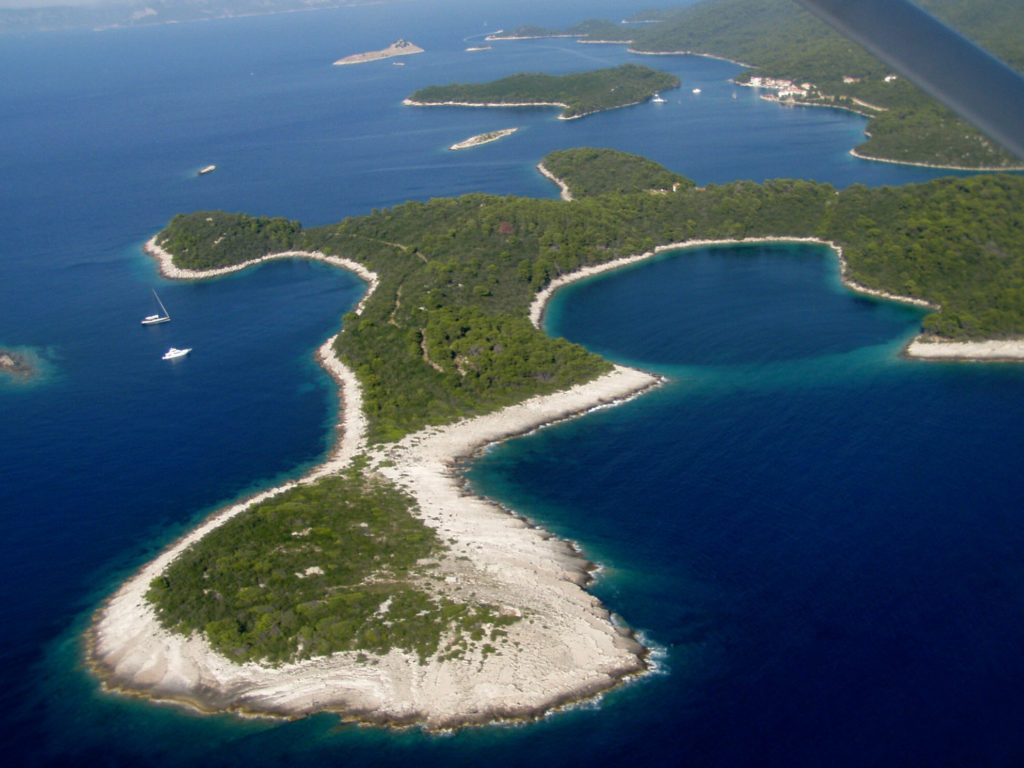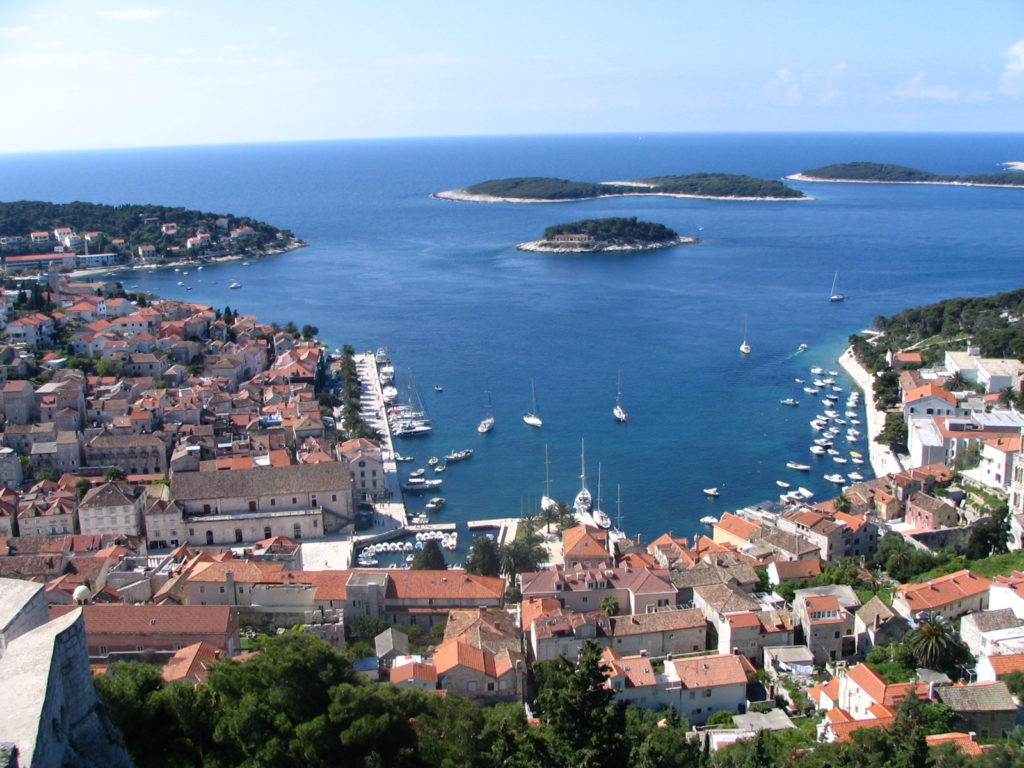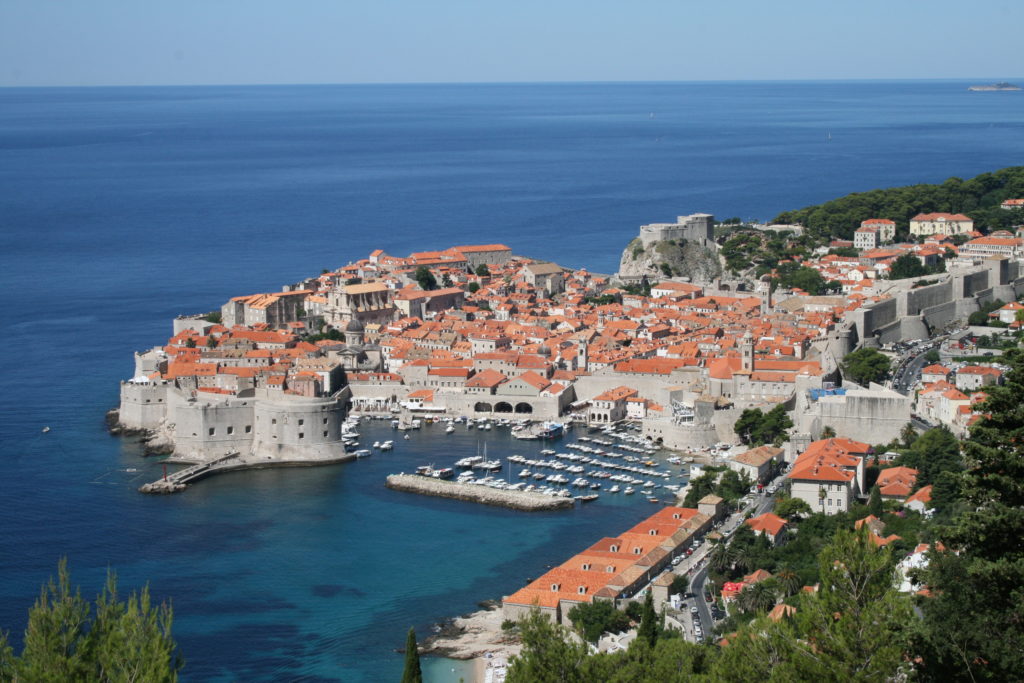10 amazing things to do in Croatia
A list of 10 amazing things to do when you travel to Croatia. Explore everything from beautiful islands to the famed local cuisine, when you visit Croatia.
With more than 1,000 islands and 2,000 km of rocky indented shoreline, Croatia is one of Europe’s top summer destinations. This is quite an achievement for a country that’s only gained its independence from the former Yugoslavia in the 90s, and that joined the European Union only in 2013. The weather in Croatia is quite spectacular. The Balkan country boasts more sunny days than Sydney, Australia, so it’s no wonder it is a sun-seekers’ paradise. The country’s coast has preserved its natural beauty, and isn’t lined with hotel chains, unlike many Mediterranean destinations.
Croatia has a lot more to offer than 50 shades of blue! Croatia has seven UNESCO world heritage sites: the old City of Dubrovnik, the Plitvice Lakes National Park, Split city with the Palace of Diocletian, the Euphrasian Basilica, the Historic Centre of Poreč, the city of Trogir, the cathedral of Saint James and the Stari Grad Plain.
Its historic cities embrace various architectural styles from Renaissance to baroque. They are a testament to its Roman, Venetian, Byzantine, and Austro-Hungarian legacy, as well as Latin Mediterranean, Orthodox and Ottoman influences. The country was colonized by Greeks, Romans, Venetians, Franks, and Habsburgs, so visitors are fascinated with the stories behind its walls and ruins.

Some interesting facts about Croatia:
The smallest town in the world is in Croatia, and is called Hum.
Croatia is the home of the Dalmatian dog breed, so you might bump into Cruella de Vile, during your travels.
Croatians invented the necktie, worn by soldiers in the 17th century, and the mechanical pencil, called the ‘Penkala’ after its creator, and kwown in short today as ‘pen’.
With so many choices, here’s an overview of the best places to visit and things to do in Croatia to be sure you make the most of your time there.
1. Sail around the islands
What many of the over 12 million annual visitors don’t know, is that the vast majority of beaches in Croatia are pebble beaches. A sailing trip could be the answer to find those stunning white sandy beaches that are few and far between. Its quite ideal for visitors who like to pack in a lot of different places in a short time. Going on a sailing trip could also mean not having to worry about accommodation and transportation, between sites of interest as you’d be sleeping on the boat. Not having to wait for ferries or returning to the same place can help save a lot of time. Not to mention you can escape the crowds by stopping for a swim anywhere in the middle of the sea. There are cruise options for all ages, budgets and travel types. If a sailing trip is too restrictive, island hopping is easy for visitors who prefer to set their own itinerary as there are plenty of ferries, taxi boats and catamarans.

A common route is sailing between Split and Dubrovnik, and it includes the amazing islands of Hvar, Korcula and Mljet. Korcula is the birthplace of Marco Polo and resembles a miniature Dubrovnik with its walls, Venetian Renaissance architecture and colourful markets. Vela Przina Beach is a sandy beach on the island of Korcula. Mljet is covered by lush vegetation and a third of the island is a nature park. Mljet national park is one of the most popular coastal hiking destinations in Croatia. Hvar is a stunning island off the Dalmatian Coast with spectacular beaches, vineyards, lavender fields, 13th century walls and Gothic palaces. Hvar Town has a thriving night scene as well. So it might be a great place to sample some Croatian wine or beer. Croatia’s oldest town, Stari Grad, is also situated on the island of Hvar, and is worth exploring!
2. Walk the city walls of Dubrovnik

Lord Byron described the town located at the southern tip of Croatia off the Adriatic Sea as ‘the pearl of the Adriatic’. Due to its location, Dubrovnik was established in the 7th century for sea trade. Game of Thrones’ King’s Landing is in fact, Dubrovnik. The 2 km defensive walls encircle most of the old city, and offers breath-taking views. Visitors who dare to venture away from the limestone pedestrian area will be rewarded with tiny narrow streets, shops and restaurants. To avoid the crowds in the busy months of July and August, head there early.
For a bird’s eye view over the city’s red-tile roofs from more than 400 meters above sea level, take the cable car to the top of the Srd Hill.
3. Explore Plitvice Lakes National Park
Almost 10% of Croatia is made up of national parks and nature reserves. Plitvice Lakes National Park, which is a UNESCO World Heritage site only a 2-hour bus ride away from Zagreb, the capital city. It is also the oldest national park in Southeast Europe. You can explore the park’s 16 interconnected lakes and waterfalls by boat, a hop on, hop off electric train or by taking a wooden plank trail. The largest waterfall is 70 meters tall. The woods are teeming with life: deer, wolves, boars, bears, and rare species of birds, but visitors aren’t allowed to wander off the established trail. Arrive early to avoid the crowds.
4. Get in the grove at music festivals
Summer is for sun, beach and music. If you can have all three in one place, why look any further? If it’s also fairly cheaper than in Western European countries, we have a winner! Most of Croatian festivals are techno, electro, minimal or a combination of the three. Picture crazy boat parties, beach raves and a chilled out atmosphere. Some of the more popular festivals include Hideout Festival, the Dubrovnik Summer Festival, Ultra Europe and Love International.
5.Walk around Diocletian’s palace in Split
The palace was built by the Roman Emperor Diocletian in the fourth century AD, to serve as his retirement residence. The palace resembles a fortress, and constitutes about half of the old town and city center of Split. The walls of this ancient palace hide many restaurants, bars and shops. The fourth season of Game of Thrones was filmed here. From Split visitors can take a ferry or catamaran to the islands of Brac, Hvar or Vis.
6. Contribute to the collection of the Museum of broken relationships in Zagreb
Visitors can browse the collections to learn the stories of broken relationships behind the objects donated by people from around the world, and even donate their own. The capital and largest city of Croatia, Zagreb, is located in northwestern Croatia and dates back to the 11th century. It is packed with old and modern attractions. Cobblestone streets hide old, medieval churches and towers.
7. Relive gladiator past at Pula Arena
The amphitheater in Pula was constructed in the first century, and is one of the six Roman arenas that have stood the test of time worldwide. Visitors are fascinated by its past: it’s a place where crowds flocked to see gladiator fights. Pula is located at the southern tip of the Istria peninsula. It now hosts various concerts throughout the year ranging from classical performances, jazz festivals to hard rock and Croatian pop music.
8. Get romantic in Rovinj
Rovinj is a small picturesque town with an archipelago of 20 islands. You can be awed by its cobble stoned streets, lined with artists, shops and art galleries, with its arches, stairways, medieval city gates, the 12th century town clock, the baroque-style St. Euphemia’s Basilica, and its scenic harbor.
9. Wine and dine
Croatia is one of the oldest wine-producing countries in the world, going back to ancient Greek settlers. It has more than 300 geographically defined wine districts. Its most popular wine-producing regions are Istria, Korcula island, Hvar island and the Peljesac peninsula. Some popular white wines include the Istrian Malvazija and Posip from Korcula. The Peljesac-produced Dingac is a renowned red wine. Croatia has a wide range of indigenous grape varietals like Plavac Mali, the child of Zinfandel.
Delight your taste buds in a local Konoba, a small family-run restaurant where you can try some homemade Croatian food, and flavored wine in a pleasant welcoming atmosphere. Seafood is an important component of Croatian gastronomy. Try the best oysters in the country, in the towns of Lim and Ston, crni rizot (black risotto), which is a squid risotto or Fiš Paprikaš, a spicy fish paprika stew. Try some pasta with Istrian truffles if you not a big seafood fan or pasticada, a traditional beef dish marinated in wine, garlic and delicious herbs, served with gnocchi. Each region has its own cuisine with Slavic and Mediterranean influences and the difference can be felt more between continental and coastal towns.
10. Get an adrenaline rush
Get your blood pumping in a series of outdoor activities like rafting, kayaking, hiking, cycling, windsurfing or sailing.
Go white water rafting on one of Croatia’s rivers, like down the Cetina river canyon near Omis or on Dobra river.
The island of Mljet and the Kornati Archipelago, as well as the lake and waterfall complexes at Krka and Plitvice, are protected areas great for hiking and cycling.
Sea kayaking has become very popular, particularly around Dubrovnik and Cavtat and on the islands of Hvar and Brac.